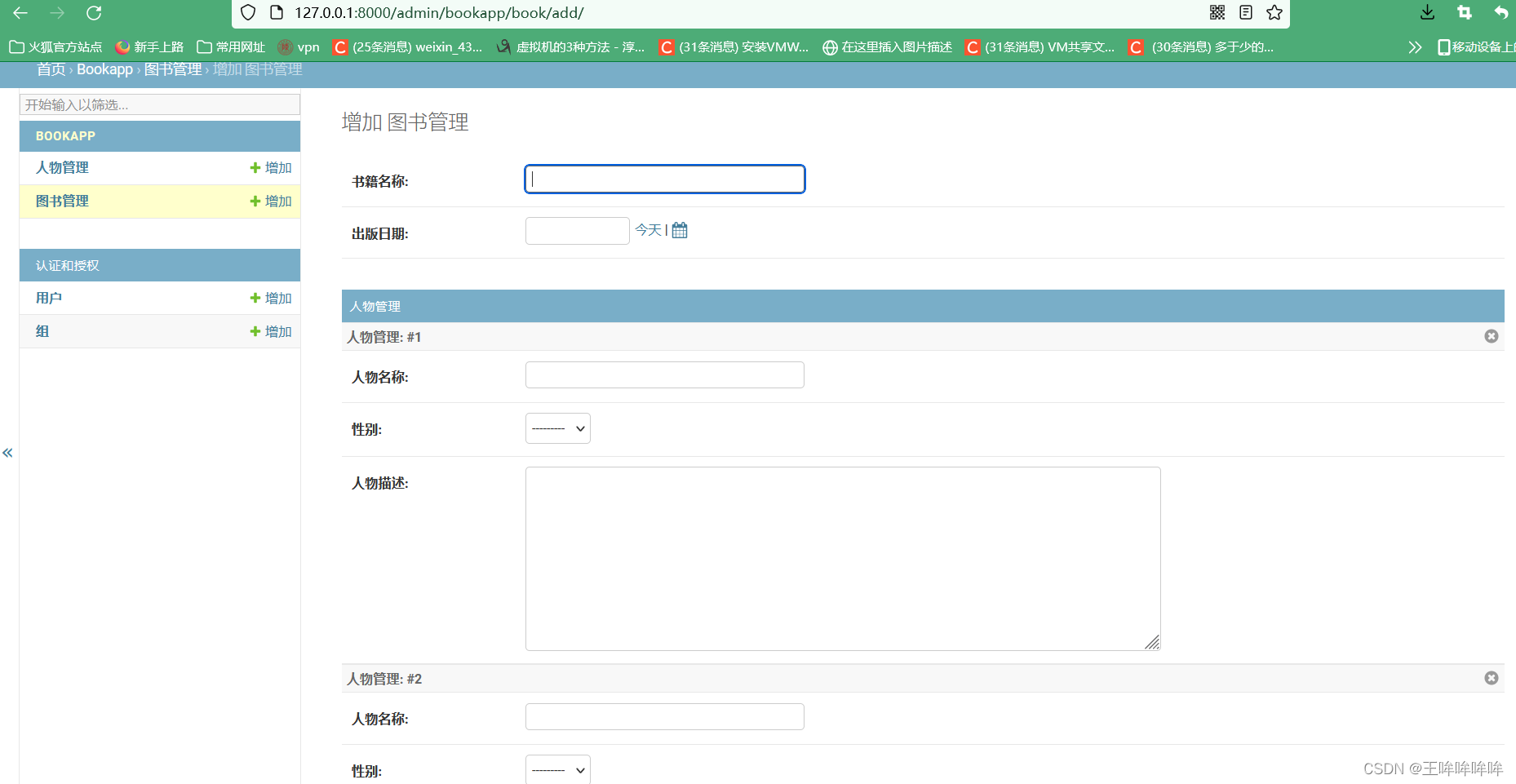介绍
接前序的三篇Transformer解读博客,补充说明第三次博客中MltiheadAttention类的数据源码处理
涉及到的源文件
\site-packages\torch\nn\modules\activation.py
\site-packages\torch\nn\functional.py
涉及到的函数
用到\site-packages\torch\nn\modules\activation.py的类:
MultiheadAttention类:
\site-packages\torch\nn\functional.py:
_in_projection_packed函数
_scaled_dot_product_attention函数
multi_head_attention_forward函数
数据流动过程
第一步:
根据以下的参数将MultiheadAttention类初始化。主要接受的参数,词向量维度,和头的数量
def __init__(self, embed_dim, num_heads, dropout=0., bias=True, add_bias_kv=False, add_zero_attn=False,kdim=None, vdim=None, batch_first=False, device=None, dtype=None) -> None:factory_kwargs = {'device': device, 'dtype': dtype}super(MultiheadAttention, self).__init__()self.embed_dim = embed_dimself.kdim = kdim if kdim is not None else embed_dimself.vdim = vdim if vdim is not None else embed_dim#是一个binary变量,表示k,q,v的维度是否一样self._qkv_same_embed_dim = self.kdim == embed_dim and self.vdim == embed_dim# print("=========================_qkv_same_embed_dim=:",self._qkv_same_embed_dim)self.num_heads = num_headsself.dropout = dropoutself.batch_first = batch_firstself.head_dim = embed_dim // num_headsassert self.head_dim * num_heads == self.embed_dim, "embed_dim must be divisible by num_heads"if self._qkv_same_embed_dim is False:self.q_proj_weight = Parameter(torch.empty((embed_dim, embed_dim), **factory_kwargs))self.k_proj_weight = Parameter(torch.empty((embed_dim, self.kdim), **factory_kwargs))self.v_proj_weight = Parameter(torch.empty((embed_dim, self.vdim), **factory_kwargs))self.register_parameter('in_proj_weight', None)else:self.in_proj_weight = Parameter(torch.empty((3 * embed_dim, embed_dim), **factory_kwargs))# print(self.in_proj_weight.shape)self.register_parameter('q_proj_weight', None)self.register_parameter('k_proj_weight', None)self.register_parameter('v_proj_weight', None)if bias:self.in_proj_bias = Parameter(torch.empty(3 * embed_dim, **factory_kwargs))else:self.register_parameter('in_proj_bias', None)self.out_proj = NonDynamicallyQuantizableLinear(embed_dim, embed_dim, bias=bias, **factory_kwargs)if add_bias_kv:self.bias_k = Parameter(torch.empty((1, 1, embed_dim), **factory_kwargs))self.bias_v = Parameter(torch.empty((1, 1, embed_dim), **factory_kwargs))else:self.bias_k = self.bias_v = Noneself.add_zero_attn = add_zero_attnself._reset_parameters()
其中in_proj_weight和in_proj_bias为初始化的权重和偏置项。通过参数_qkv_same_embed_dim判断是否为自注意力,如果是自注意力的话将q进行扩充3倍处理。
第二步
初始化权重和偏置项:
在_reset_parameters()函数中进行初始化,给权重和偏置项中的每个位置随机填充-a到a之间的一个数字,a的计算用到的以下的公式:
a=gain×6fan_in+fan_outa = \text{gain} \times \sqrt{\frac{6}{\text{fan\_in} + \text{fan\_out}}} a=gain×fan_in+fan_out6
以上公式的实现如下
def xavier_uniform_(tensor: Tensor, gain: float = 1.) -> Tensor:r"""Fills the input `Tensor` with values according to the methoddescribed in `Understanding the difficulty of training deep feedforwardneural networks` - Glorot, X. & Bengio, Y. (2010), using a uniformdistribution. The resulting tensor will have values sampled from:math:`\mathcal{U}(-a, a)` where.. math::a = \text{gain} \times \sqrt{\frac{6}{\text{fan\_in} + \text{fan\_out}}}Also known as Glorot initialization.Args:tensor: an n-dimensional `torch.Tensor`gain: an optional scaling factorExamples:>>> w = torch.empty(3, 5)>>> nn.init.xavier_uniform_(w, gain=nn.init.calculate_gain('relu'))"""fan_in, fan_out = _calculate_fan_in_and_fan_out(tensor)std = gain * math.sqrt(2.0 / float(fan_in + fan_out))a = math.sqrt(3.0) * std # Calculate uniform bounds from standard deviationreturn _no_grad_uniform_(tensor, -a, a)
fan_in 和fan_out的计算是根据输入tensor的维度确定的:
def _calculate_fan_in_and_fan_out(tensor):dimensions = tensor.dim()if dimensions < 2:raise ValueError("Fan in and fan out can not be computed for tensor with fewer than 2 dimensions")num_input_fmaps = tensor.size(1)num_output_fmaps = tensor.size(0)receptive_field_size = 1if tensor.dim() > 2:# math.prod is not always available, accumulate the product manually# we could use functools.reduce but that is not supported by TorchScriptfor s in tensor.shape[2:]:receptive_field_size *= sfan_in = num_input_fmaps * receptive_field_sizefan_out = num_output_fmaps * receptive_field_sizereturn fan_in, fan_out
第三步
在MultiheadAttention类的forward中进行每个batch的计算。
简化来看进行的是如下的操作:
(1)三个参数分别经过一个全连接层
if not use_separate_proj_weight:#三个参数与in_porj_weight相乘。q, k, v = _in_projection_packed(query, key, value, in_proj_weight, in_proj_bias)
def _in_projection_packed(q: Tensor,k: Tensor,v: Tensor,w: Tensor,b: Optional[Tensor] = None,
) -> List[Tensor]:r"""Performs the in-projection step of the attention operation, using packed weights.Output is a triple containing projection tensors for query, key and value.Args:q, k, v: query, key and value tensors to be projected. For self-attention,these are typically the same tensor; for encoder-decoder attention,k and v are typically the same tensor. (We take advantage of theseidentities for performance if they are present.) Regardless, q, k and vmust share a common embedding dimension; otherwise their shapes may vary.w: projection weights for q, k and v, packed into a single tensor. Weightsare packed along dimension 0, in q, k, v order.b: optional projection biases for q, k and v, packed into a single tensorin q, k, v order.Shape:Inputs:- q: :math:`(..., E)` where E is the embedding dimension- k: :math:`(..., E)` where E is the embedding dimension- v: :math:`(..., E)` where E is the embedding dimension- w: :math:`(E * 3, E)` where E is the embedding dimension- b: :math:`E * 3` where E is the embedding dimensionOutput:- in output list :math:`[q', k', v']`, each output tensor will have thesame shape as the corresponding input tensor."""E = q.size(-1)if k is v:if q is k:# print("=========q:",q.shape)# print("=========w:",w.shape)return linear(q, w, b).chunk(3, dim=-1)else:# encoder-decoder attentionw_q, w_kv = w.split([E, E * 2])if b is None:b_q = b_kv = Noneelse:b_q, b_kv = b.split([E, E * 2])return (linear(q, w_q, b_q),) + linear(k, w_kv, b_kv).chunk(2, dim=-1)else:w_q, w_k, w_v = w.chunk(3)if b is None:b_q = b_k = b_v = Noneelse:b_q, b_k, b_v = b.chunk(3)return linear(q, w_q, b_q), linear(k, w_k, b_k), linear(v, w_v, b_v)
(2)三参数在bachsize维度根据头数扩充
多头就是在这里进行工作的
q = q.contiguous().view(tgt_len, bsz * num_heads, head_dim).transpose(0, 1)
k = k.contiguous().view(k.shape[0], bsz * num_heads, head_dim).transpose(0, 1)
v = v.contiguous().view(v.shape[0], bsz * num_heads, head_dim).transpose(0, 1)
(3)三参数顺序列相乘
获得注意力向量和最终结果。注意这里torch.bmm的使用。
def _scaled_dot_product_attention(q: Tensor,k: Tensor,v: Tensor,attn_mask: Optional[Tensor] = None,dropout_p: float = 0.0,
) -> Tuple[Tensor, Tensor]:r"""Computes scaled dot product attention on query, key and value tensors, usingan optional attention mask if passed, and applying dropout if a probabilitygreater than 0.0 is specified.Returns a tensor pair containing attended values and attention weights.Args:q, k, v: query, key and value tensors. See Shape section for shape details.attn_mask: optional tensor containing mask values to be added to calculatedattention. May be 2D or 3D; see Shape section for details.dropout_p: dropout probability. If greater than 0.0, dropout is applied.Shape:- q: :math:`(B, Nt, E)` where B is batch size, Nt is the target sequence length,and E is embedding dimension.- key: :math:`(B, Ns, E)` where B is batch size, Ns is the source sequence length,and E is embedding dimension.- value: :math:`(B, Ns, E)` where B is batch size, Ns is the source sequence length,and E is embedding dimension.- attn_mask: either a 3D tensor of shape :math:`(B, Nt, Ns)` or a 2D tensor ofshape :math:`(Nt, Ns)`.- Output: attention values have shape :math:`(B, Nt, E)`; attention weightshave shape :math:`(B, Nt, Ns)`"""B, Nt, E = q.shapeq = q / math.sqrt(E)# (B, Nt, E) x (B, E, Ns) -> (B, Nt, Ns)attn = torch.bmm(q, k.transpose(-2, -1))if attn_mask is not None:attn += attn_maskattn = softmax(attn, dim=-1)if dropout_p > 0.0:attn = dropout(attn, p=dropout_p)# (B, Nt, Ns) x (B, Ns, E) -> (B, Nt, E)output = torch.bmm(attn, v)return output, attn
总结
源码总对于num_head的处理有代码冗余的情况。
](/images/no-images.jpg)


